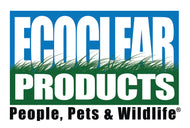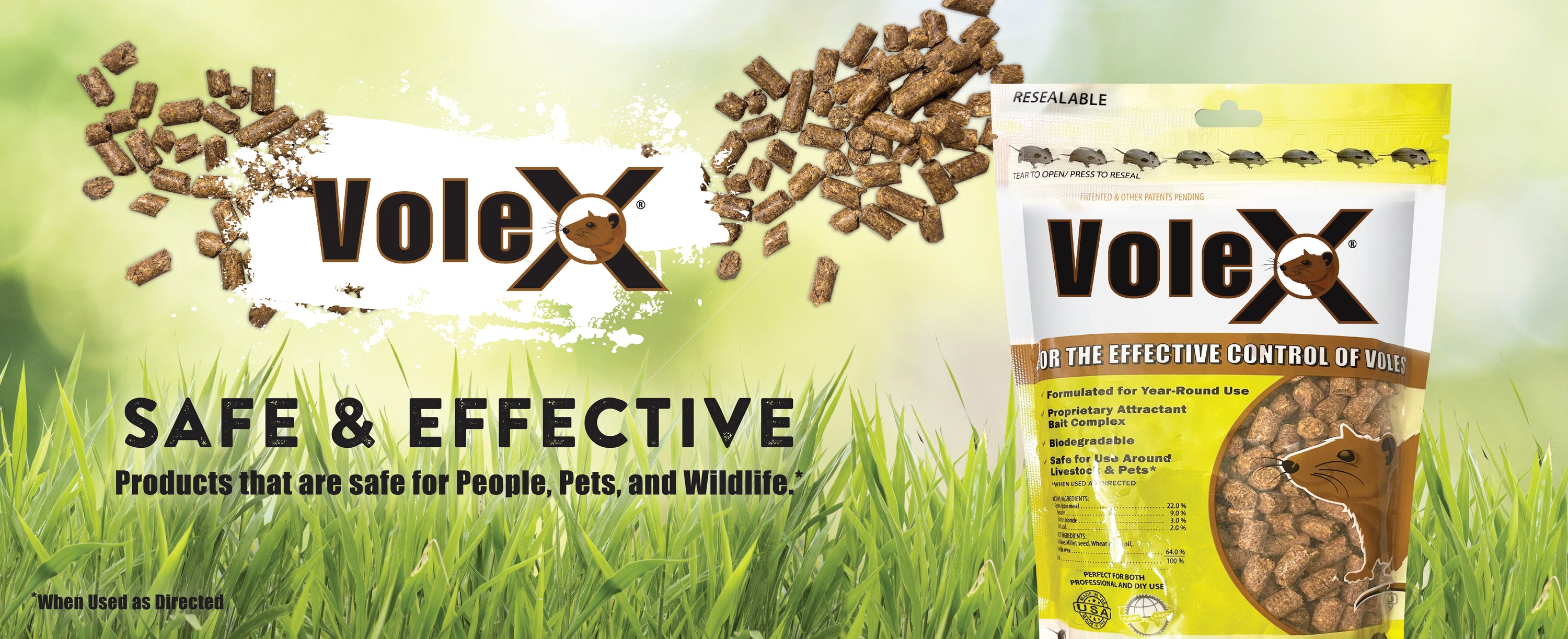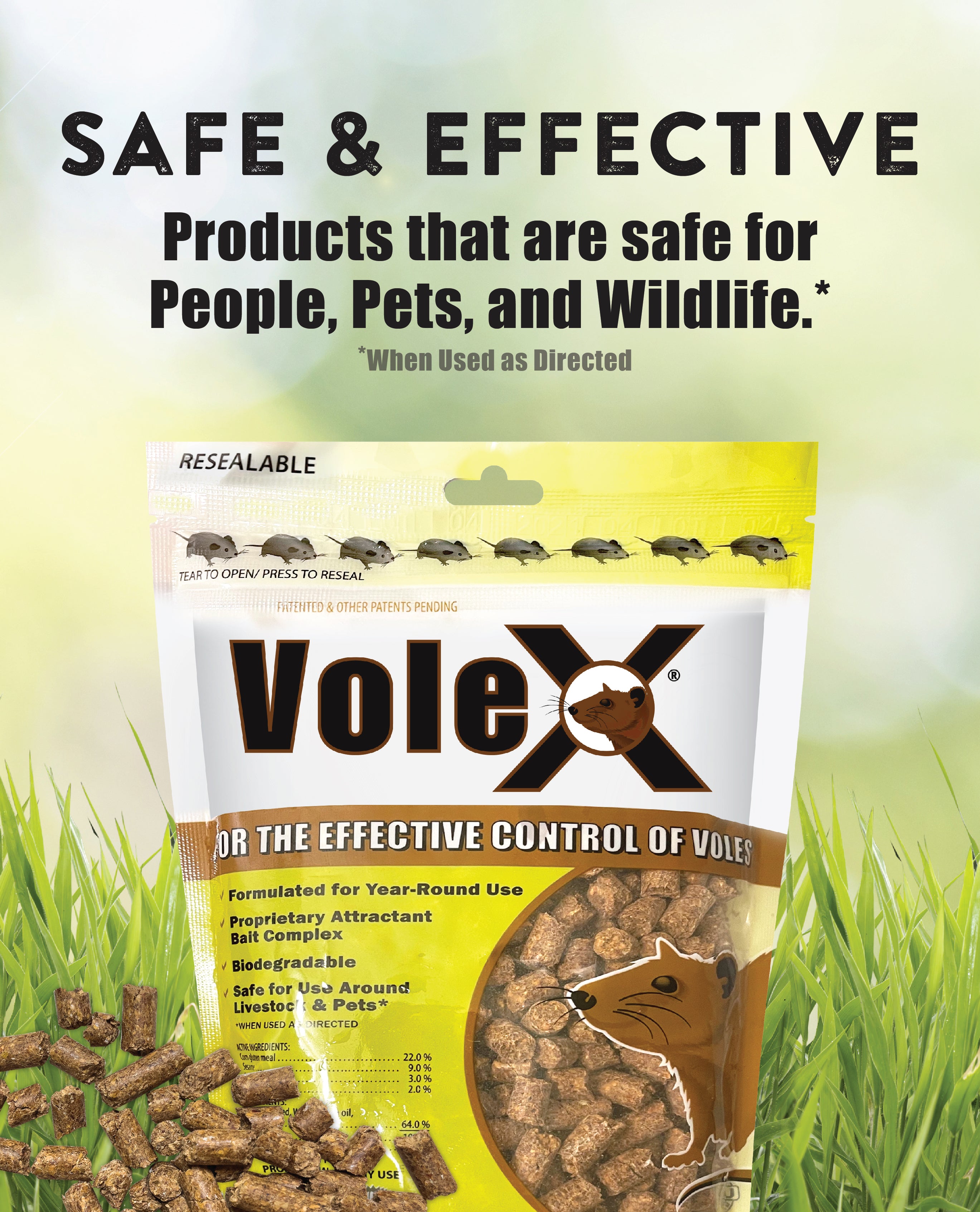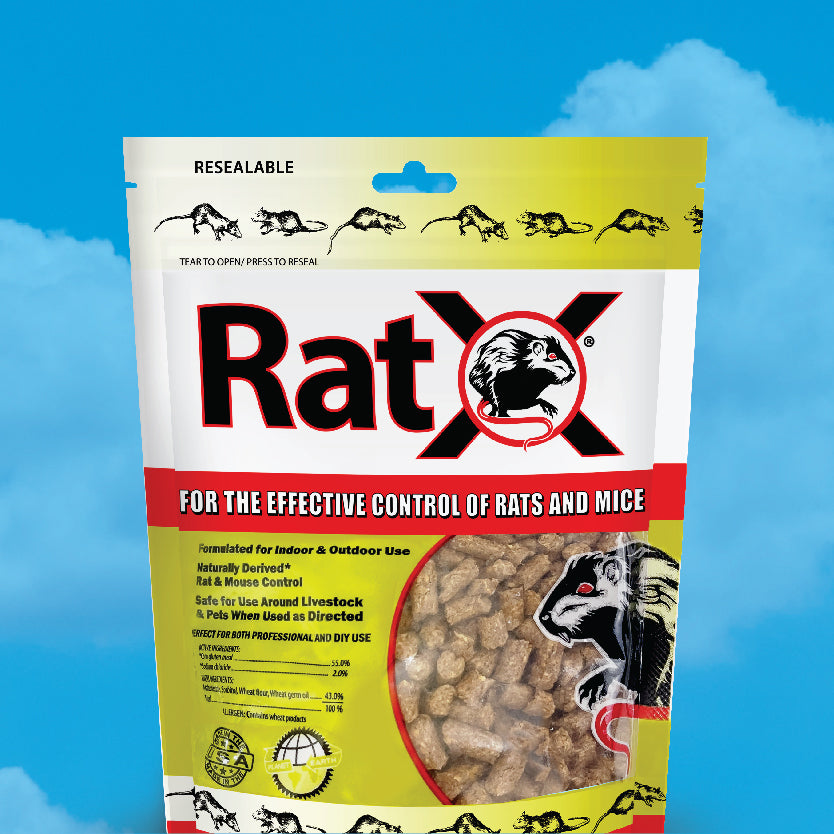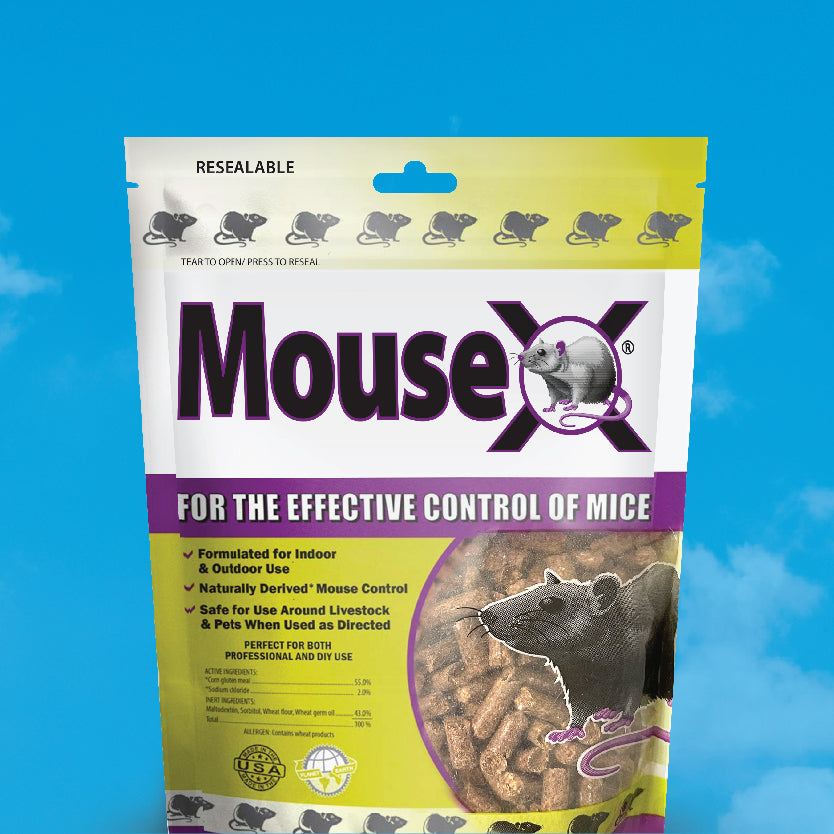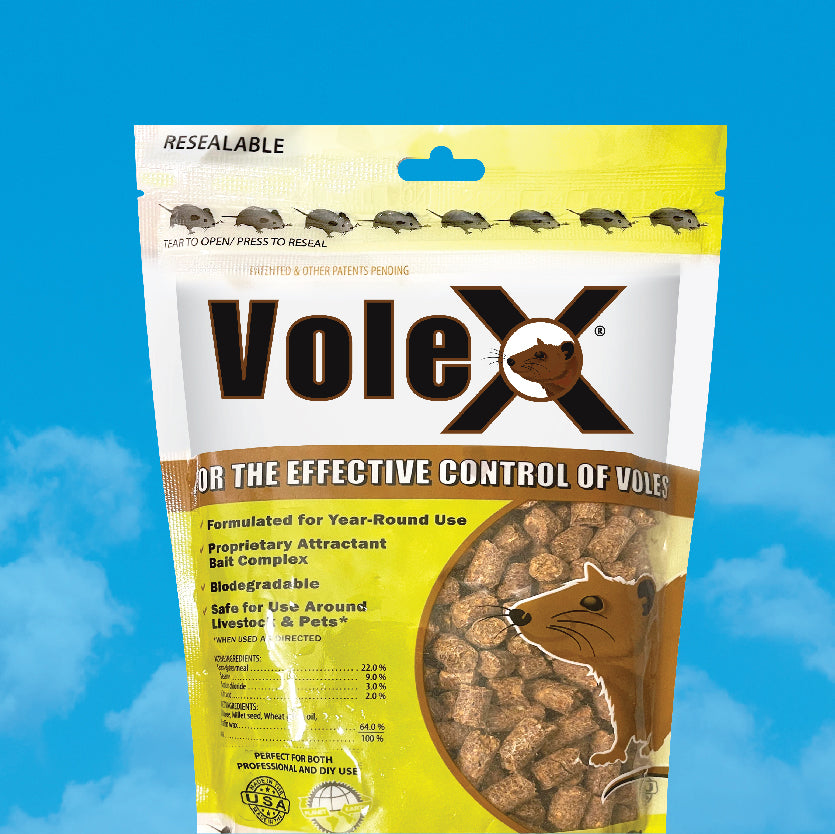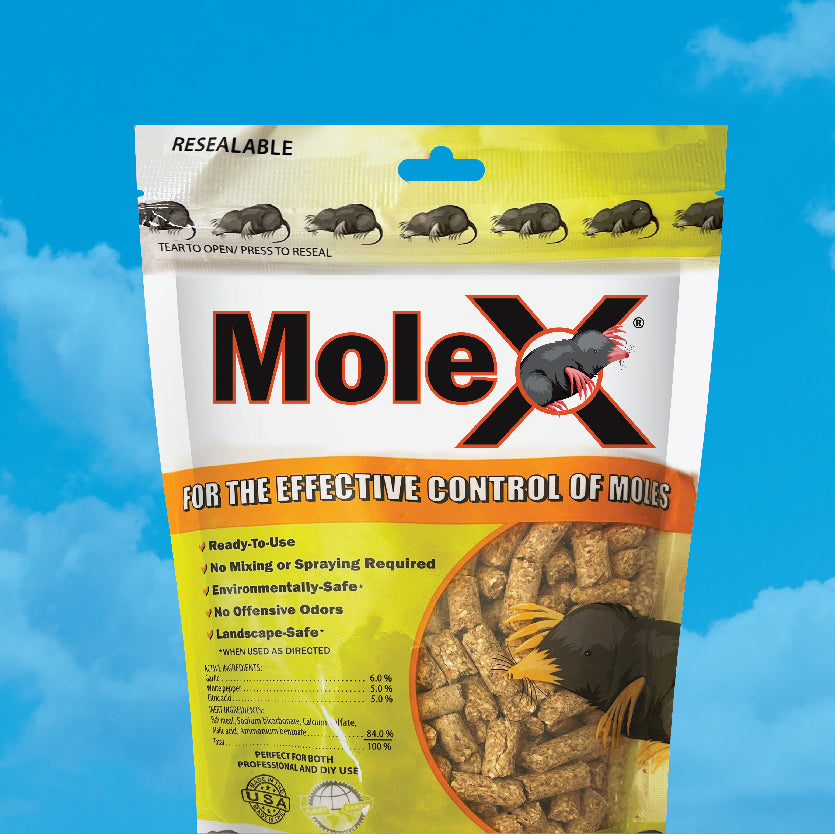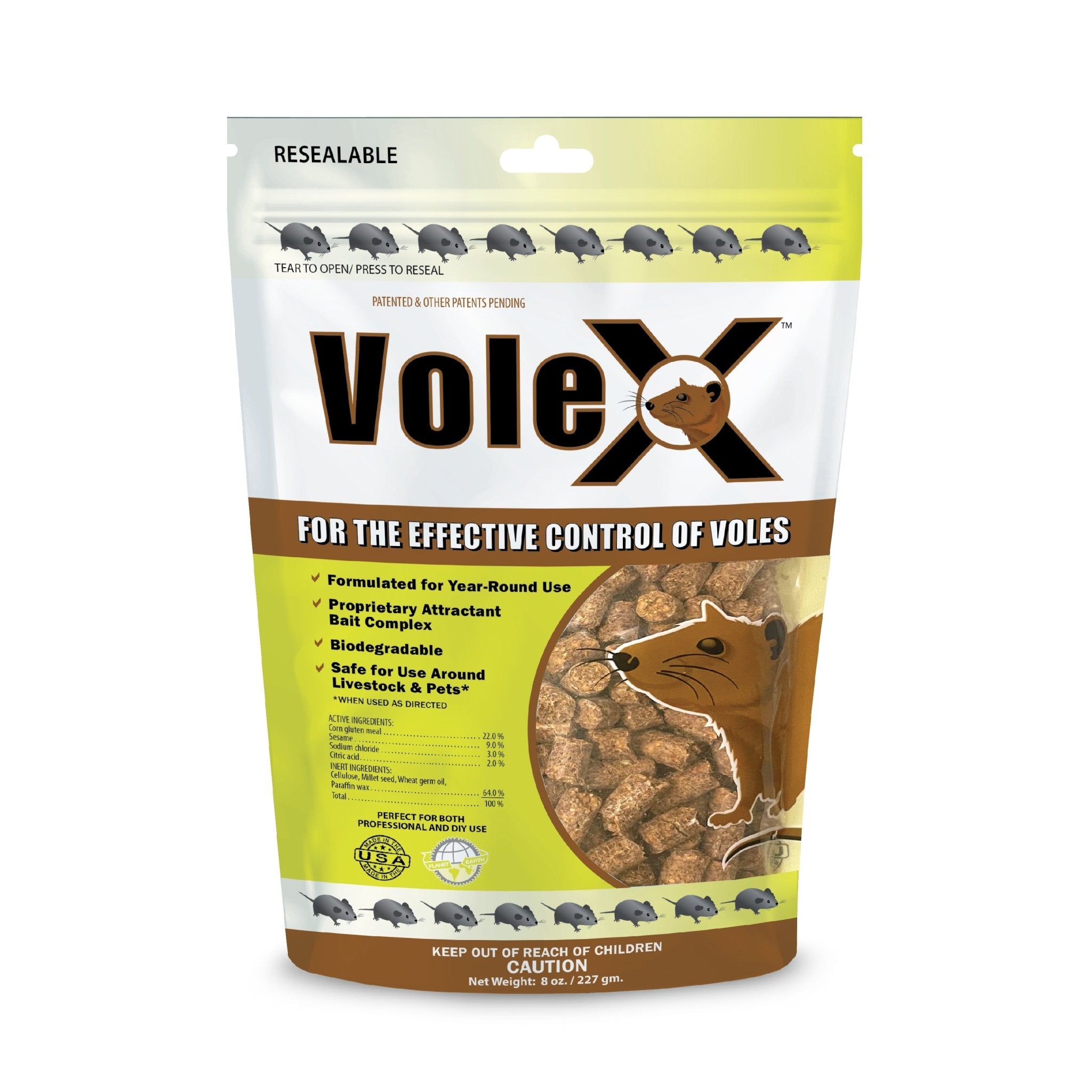
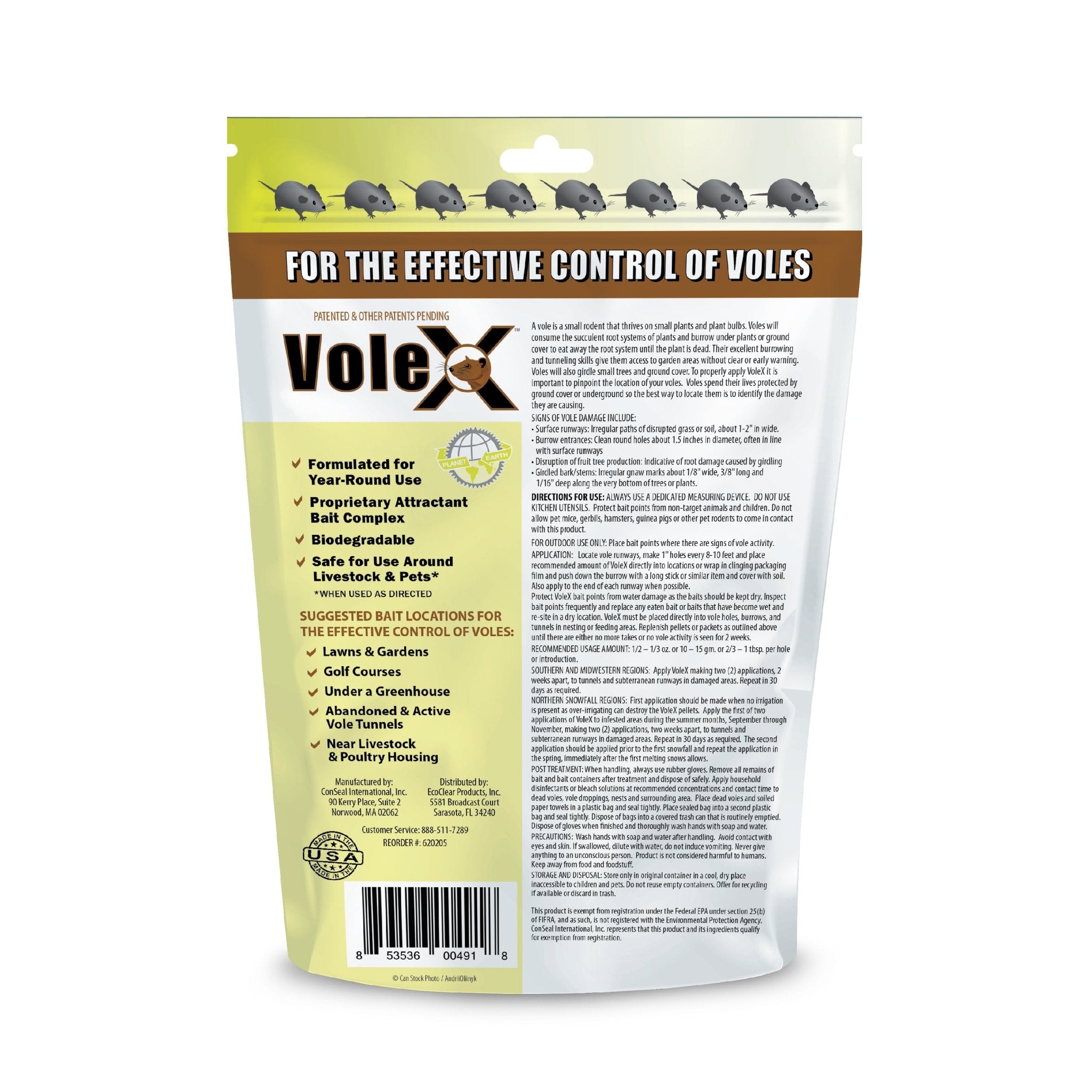
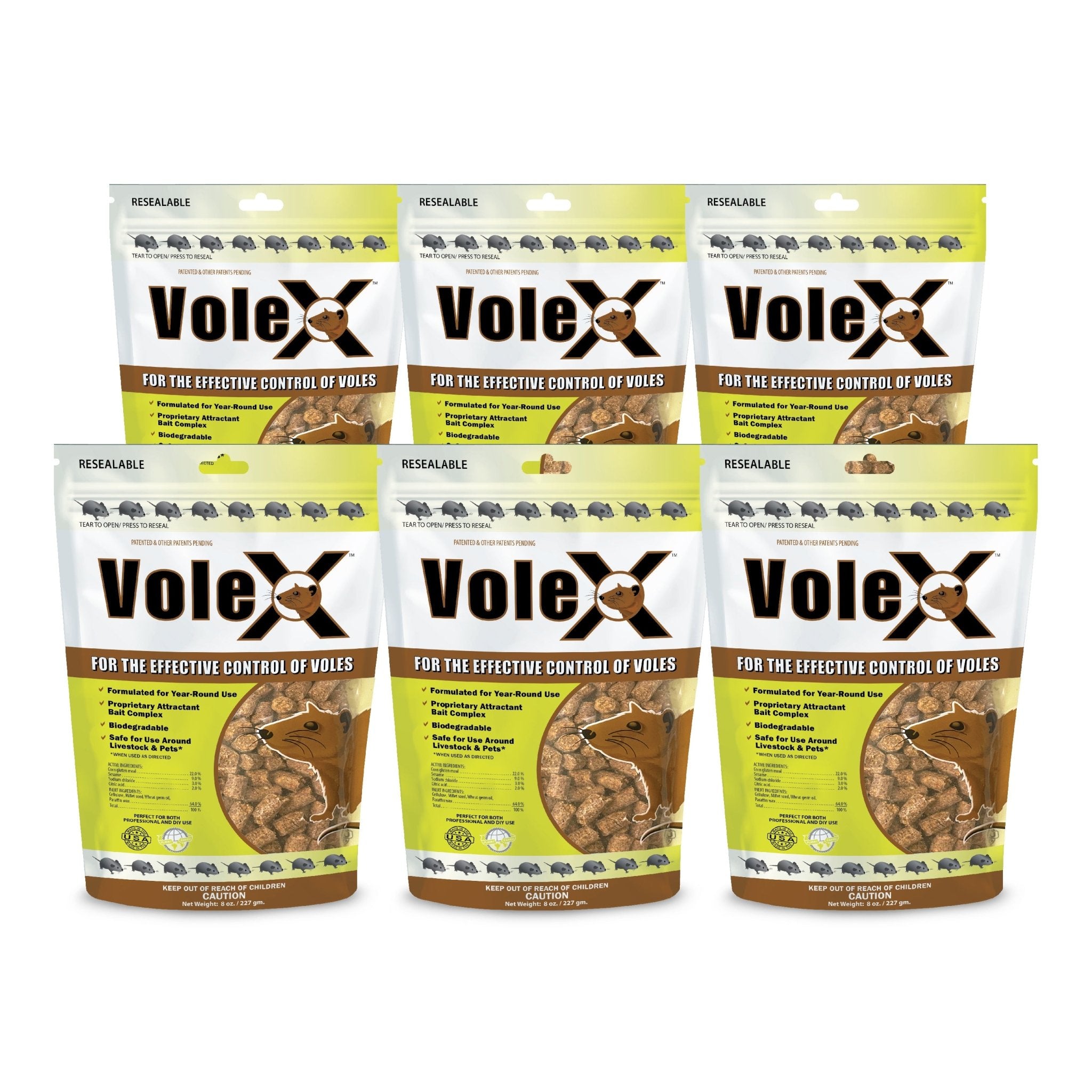
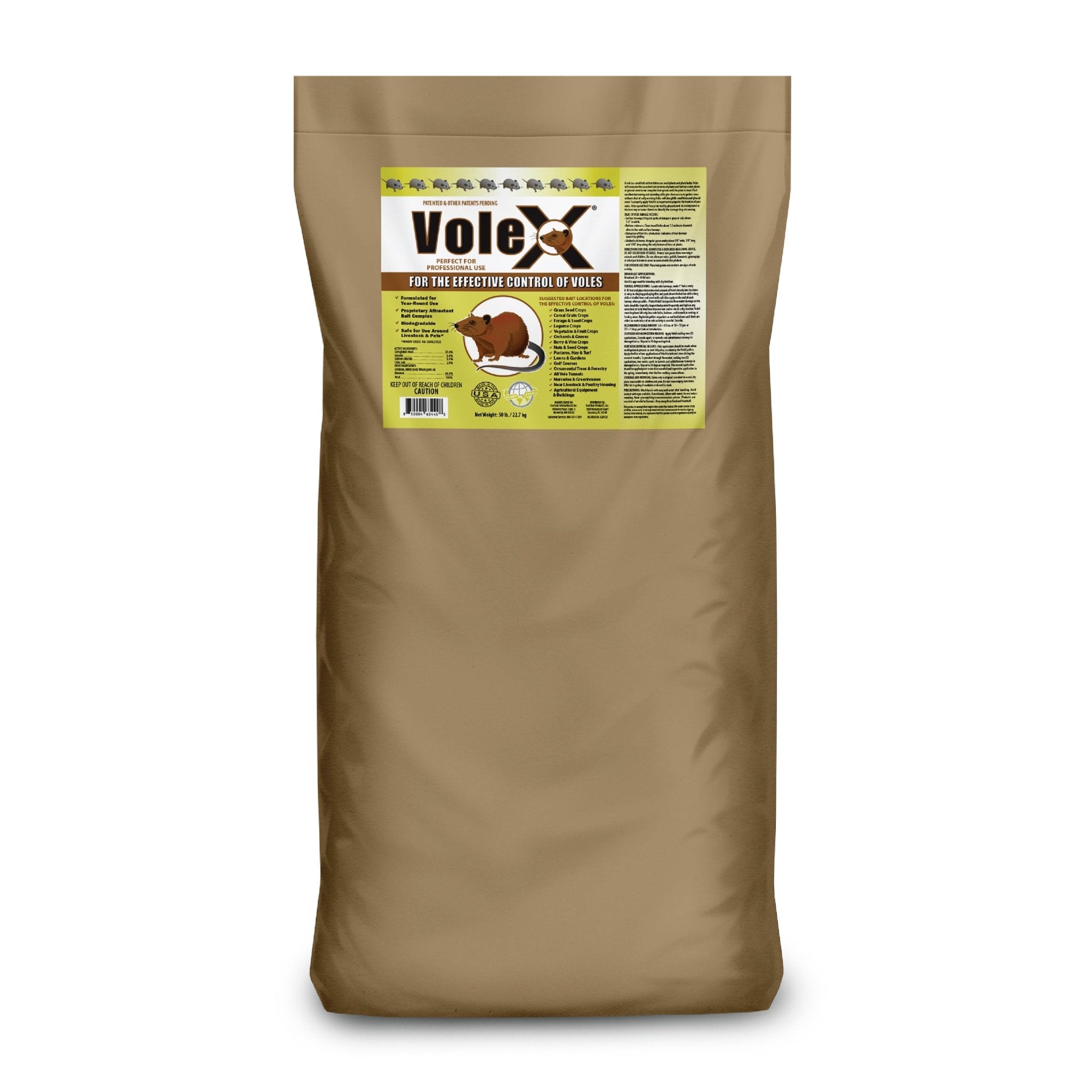
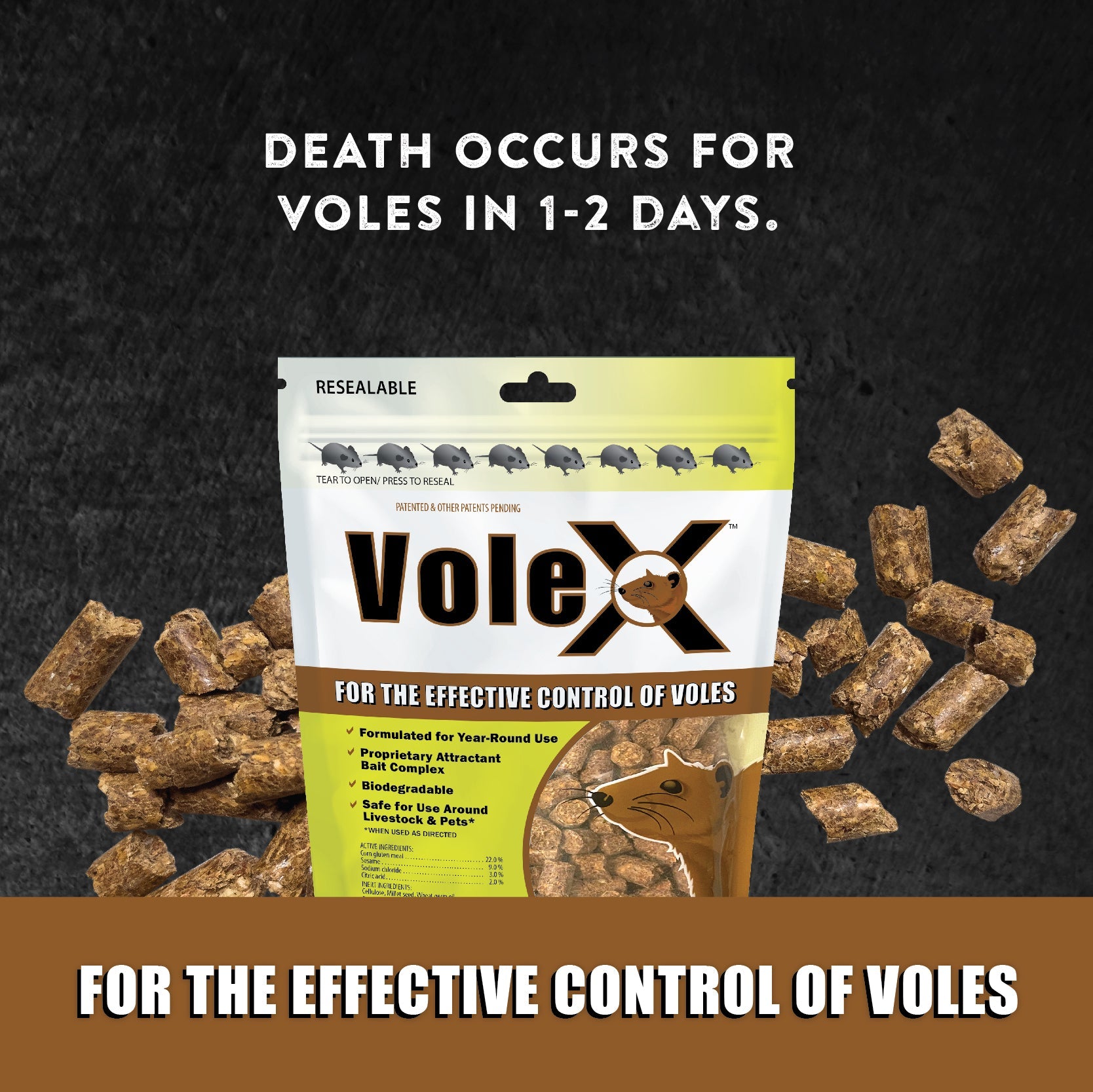

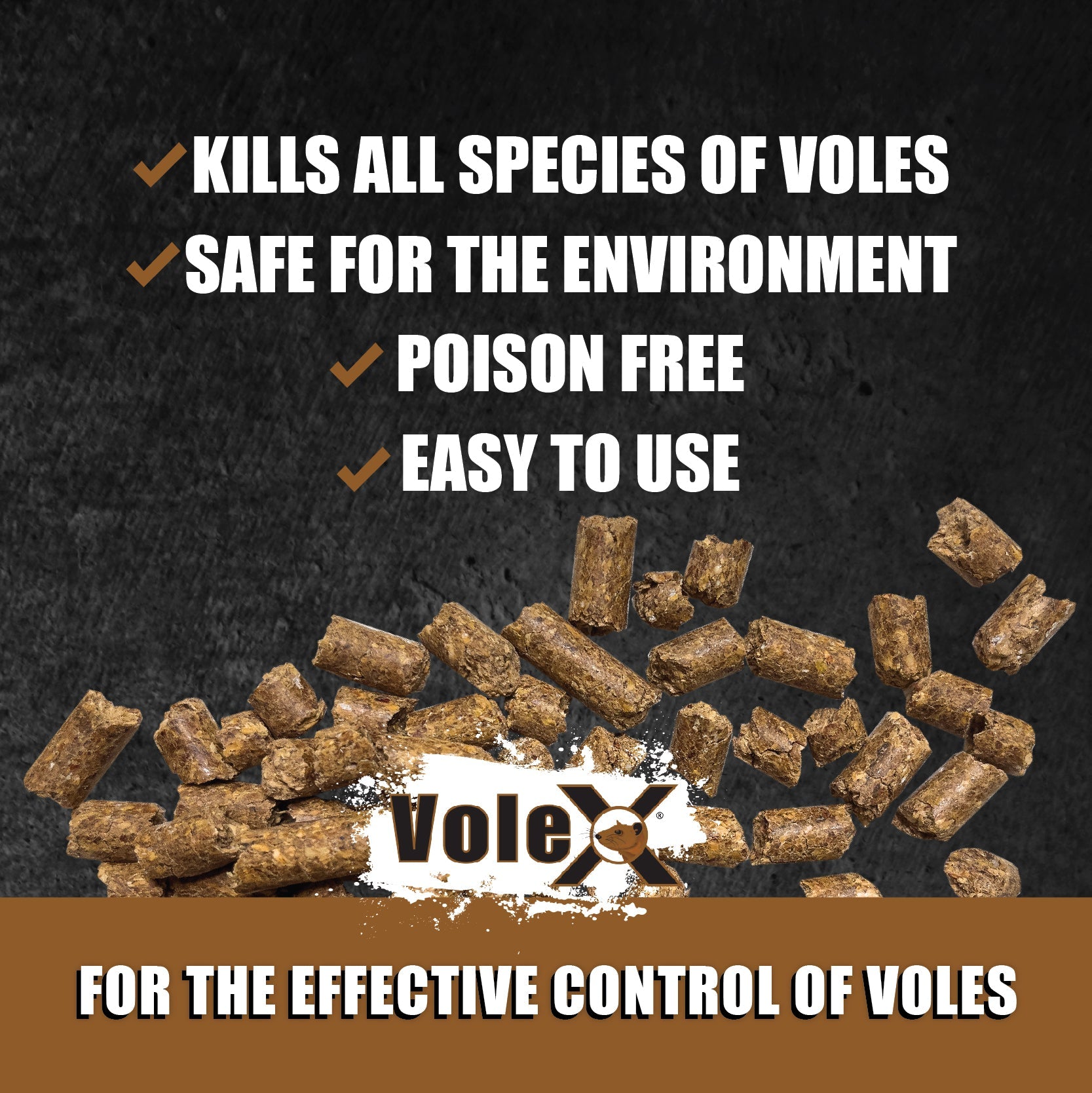
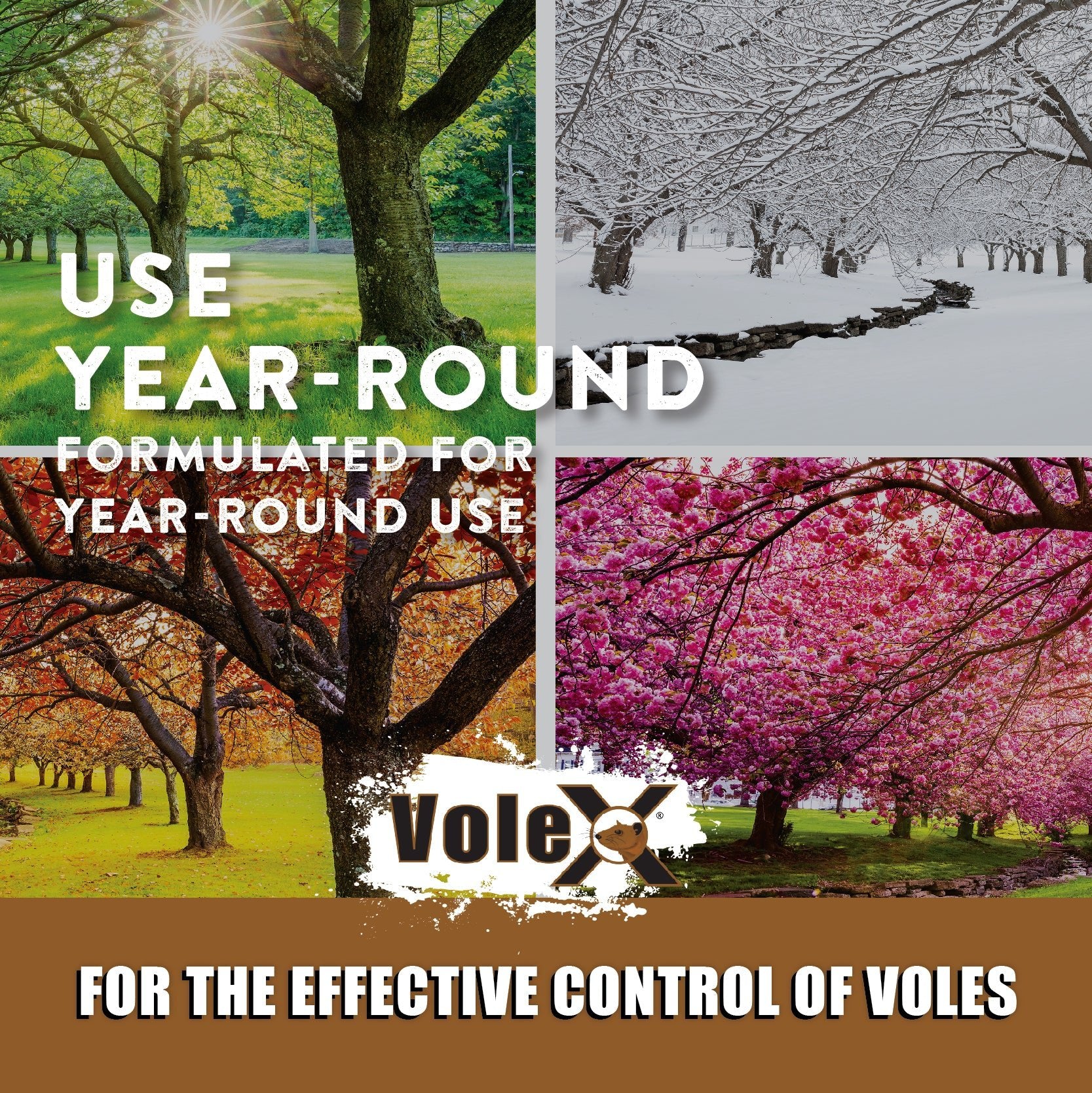
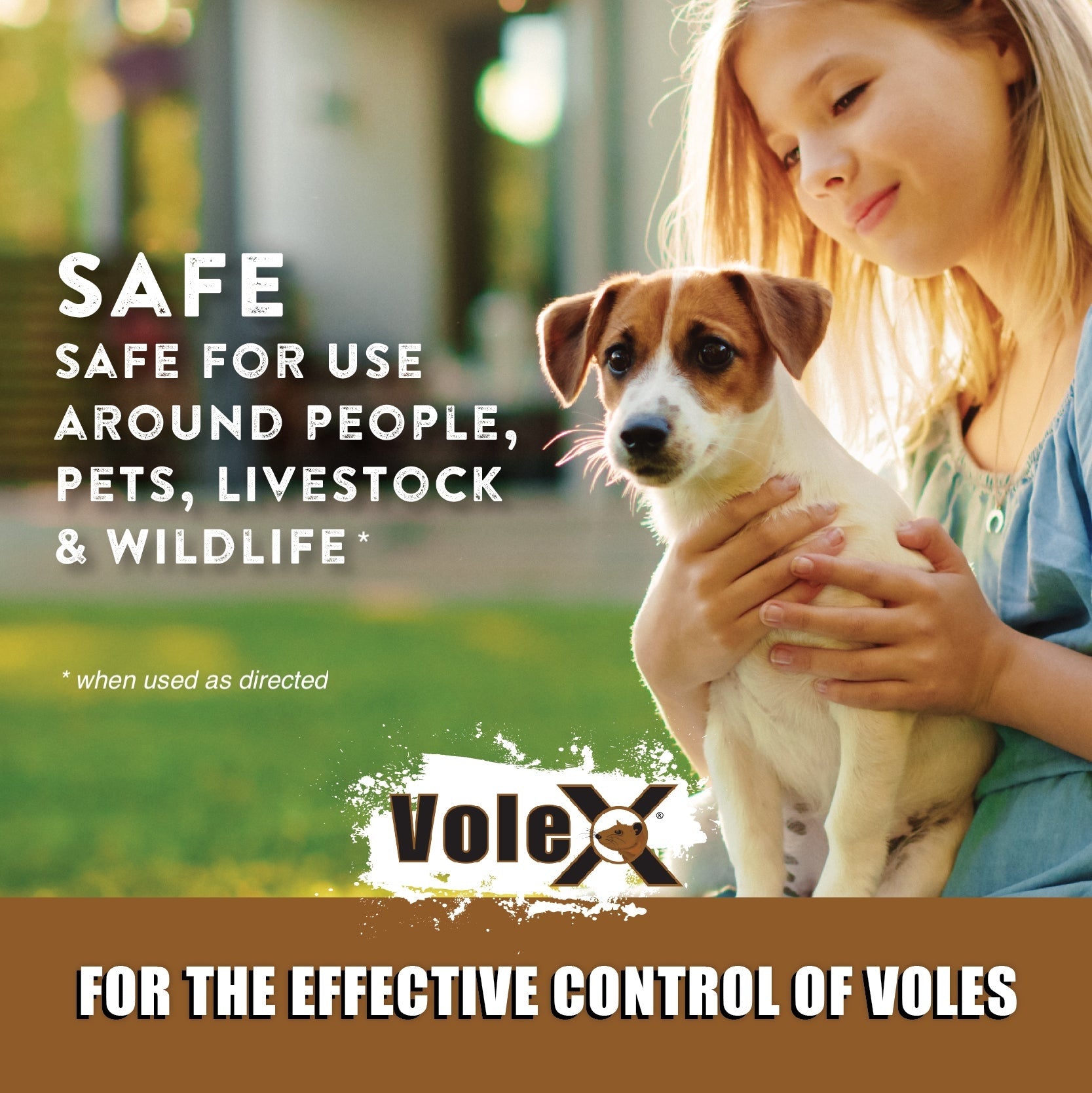
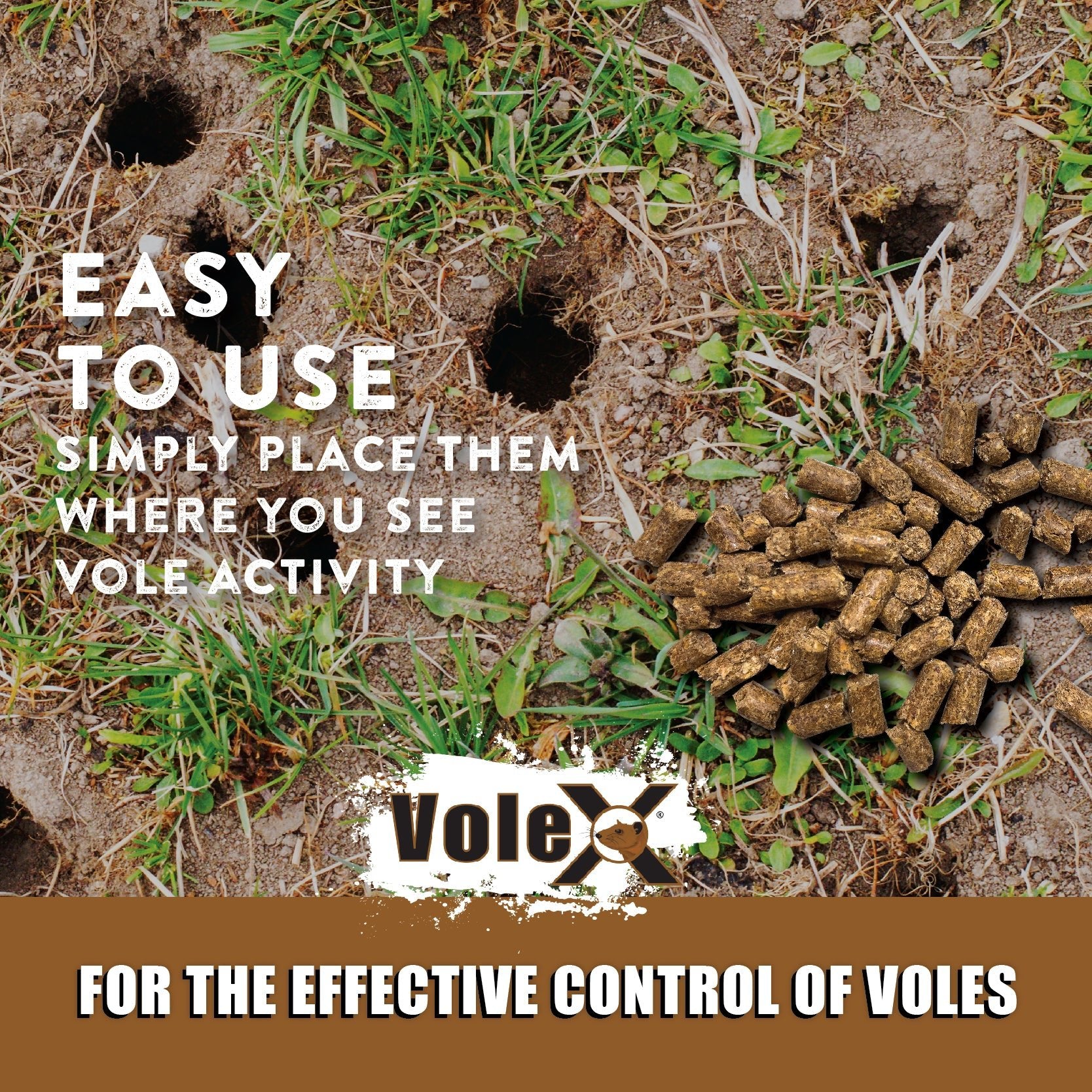
VoleX®
VoleX®
8 oz.
5581 Broadcast Ct
5581 Broadcast Court
Sarasota FL 34240
United States
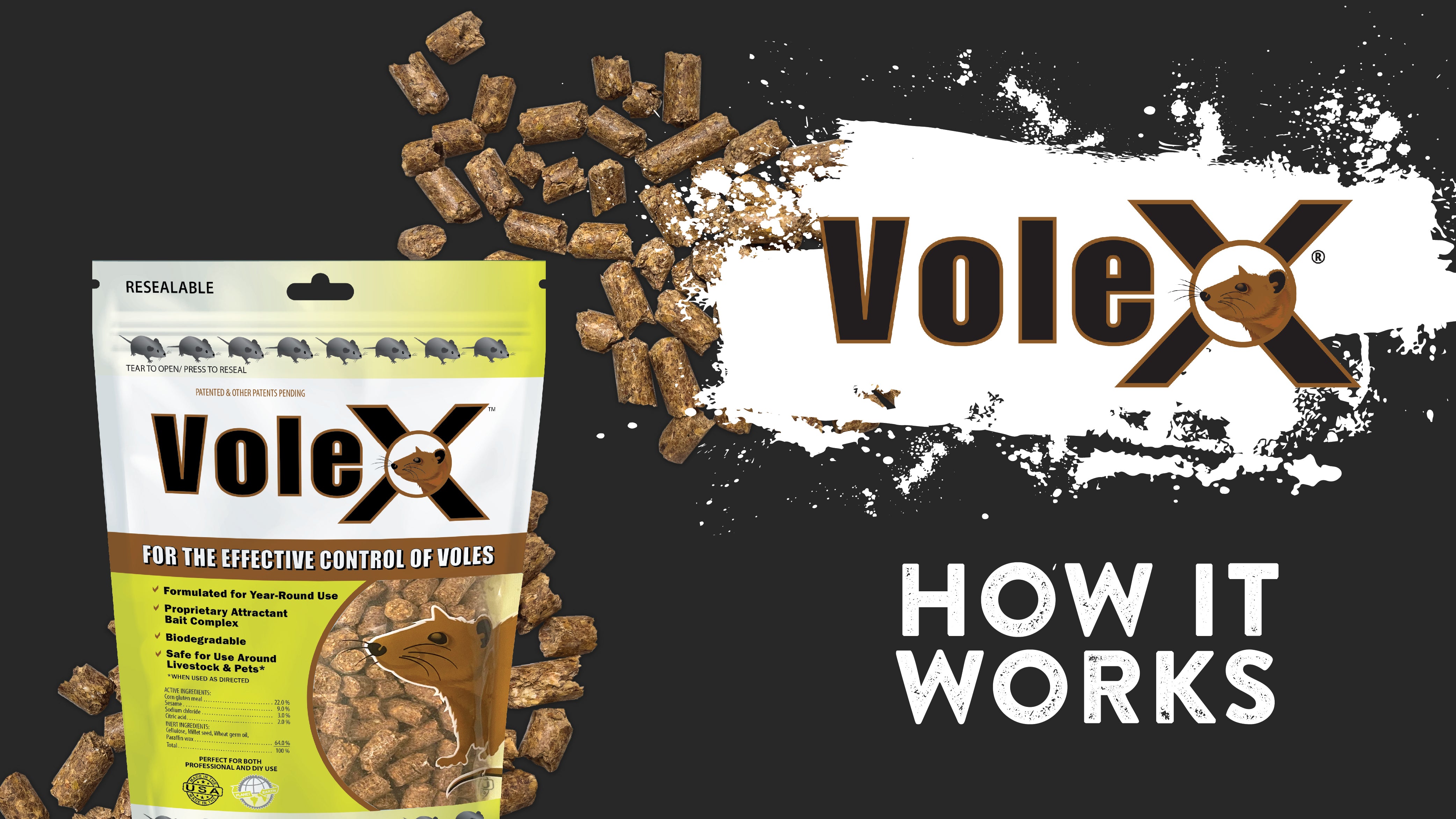
Safe

Safe for Use Around Livestock & Pets When Used as Directed.

Patented Mechanical Kill System Requires No Conventional Poisons.

Formulated for Outdoor Use. Perfect for Both Professional & DIY Use.
HOW voleX® WORKS
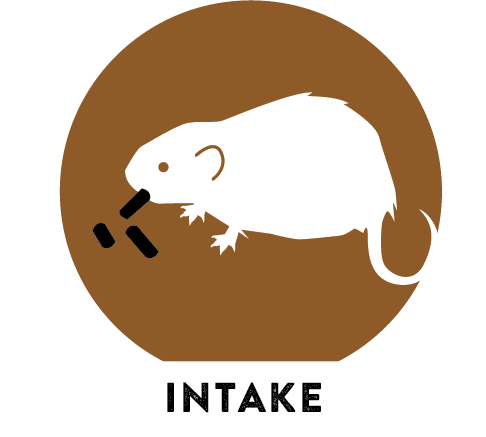
Step 1
Rodents naturally intake 10% of their body weight per feeding; consuming 4%-6% of the rodent’s weight is lethal for the pest.
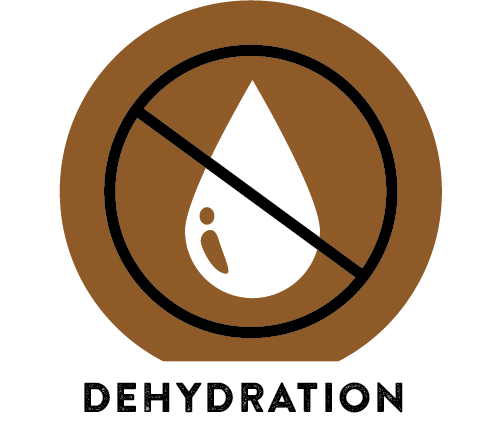
Step 2
After intake, the rodent no longer has the ability to drink, leading to dehydration.
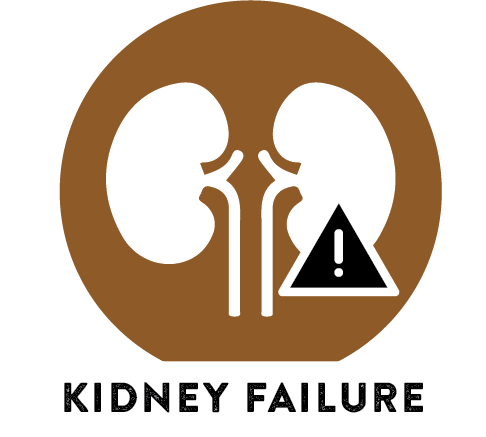
Step 3
Without the ability to drink water, dehydration continues, leading to kidney failure and unconsciousness.
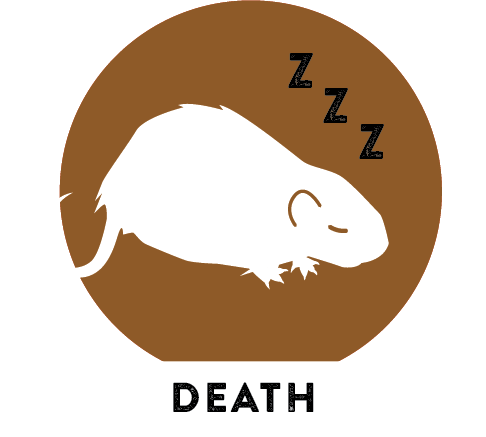
Step 4
The rodent dies in its sleep.
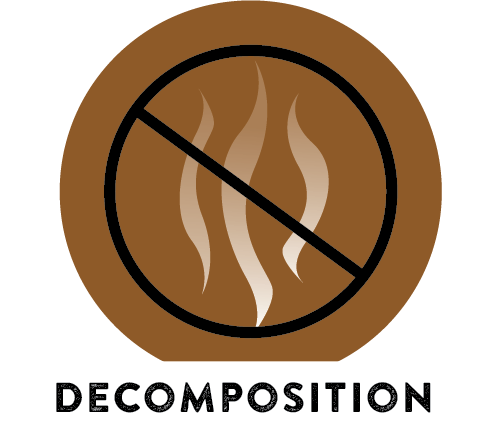
Step 5
The Sodium Chloride continues to
dehydrate the rodent from the inside out, mummifying the animal and eliminating the moisture and foul odors.
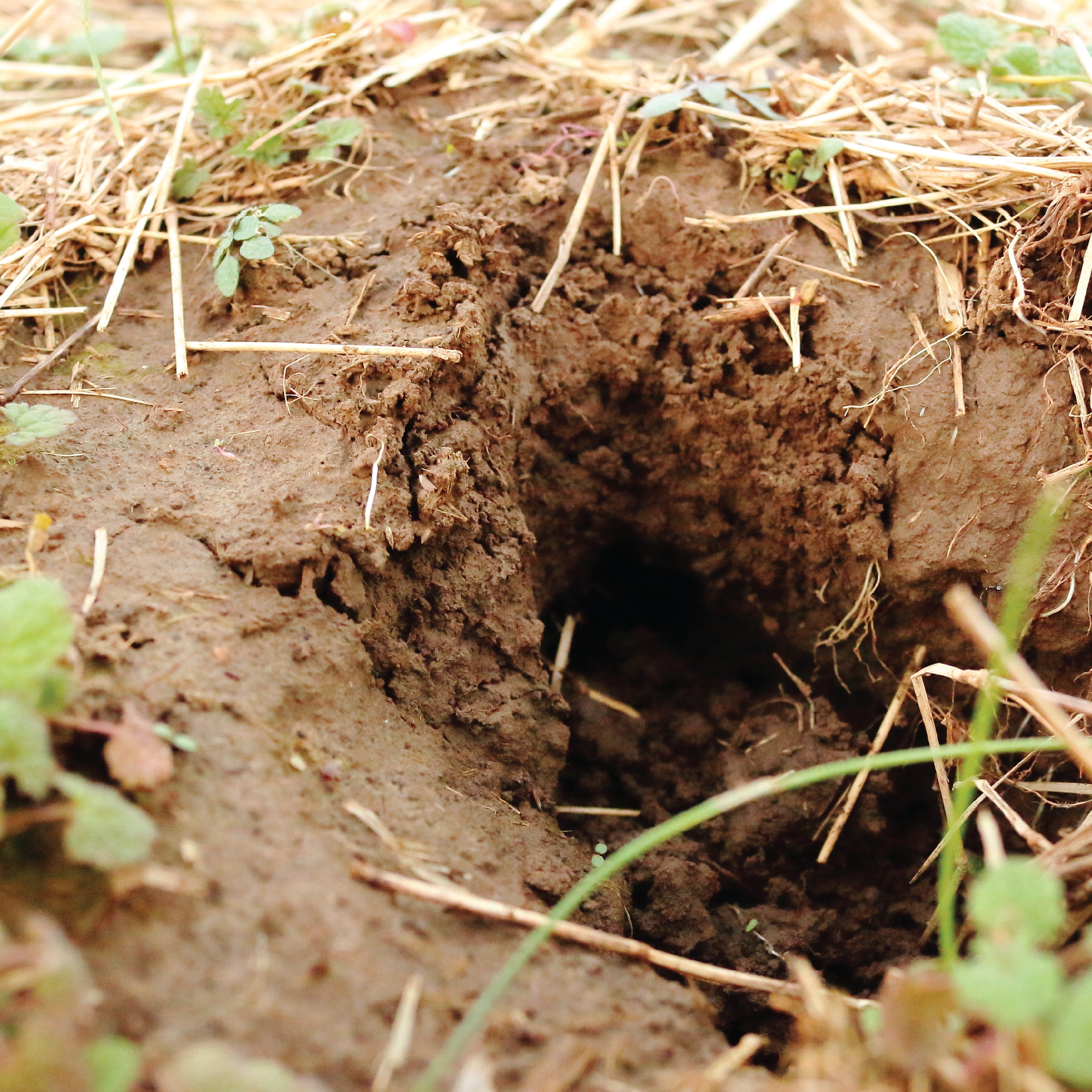
USING VOLEX® ON YOUR PROPERTY
To use VoleX® on your property, first, locate vole runs or other areas where you believe voles may be present. Make 1-inch holes every 8-10 inches and place the recommended amount of VoleX® (½ – ⅓ oz. or 10 – 15 gm. Or ⅔ – 1 tbsp. Per hole) into each hole. Wrap in pellets in cling film if you believe they may be exposed to moisture, as exposure to moisture can reduce effectiveness. Replenish pellets as instructed by packaging until there are either no more takes or no vole activity is seen for 2 weeks.
ABOUT VOLE CONTROL
WHAT ARE VOLES?
Voles are small, mouse-like rodents found in both North America and Eurasia. Like mice, voles are omnivorous. Their preferred sources of food are small plants and plant bulbs, making them a particular problem in outdoor environments such as gardens and farms. Voles will consume the succulent root systems of plants and burrow under plants or ground cover to eat away at roots until the plant itself is dead. Voles are adept burrowers and tunnelers, which means they can access plants without easily being noticed.
VOLE IDENTIFICATION
Size: There are 155 species of voles, each varying slightly in size. The smallest vole species rarely exceed 3 inches in length (minus tail), while the largest species can reach nearly 9 inches in length.
Coloration: Voles have short, rough fur that is gray or brown in color.
Behavior: Voles are prolific burrowers and breeders. Though they frequently scurry between burrows and food sources, they are infrequently glimpsed by property owners. Voles can have up to 10 litters per year, each consisting of 5-10 young.
CONTROLLING AND PREVENTING
When a vole infestation strikes your property, you want to prepared with a solution that not only takes care of voles, but also keeps your property safe in the process. As vole infestations commonly occur outdoors near trees and plants, it’s important to pick a vole control solution that is not damaging to the soil or the flora that grow in it. Of course, you’ll also want to settle on a solution that actually works, preferably both in the areas of control and prevention. VoleX® is that solution.
SIGNS OF A VOLE INFESTATION
Vole Runways and Burrows
Perhaps the most common and easy-to-spot indicators of a vole infestation are vole runways and burrows. Voles create visible, above-ground runways in turf and soil to connect their burrows (nesting areas). These well-defined surface runways are about two inches wide and are typically constructed in grassy areas as the result of grass consumption by voles and steady foot traffic between burrows. To a human observer, vole runs look like chaotic scribbles in a lawn, where grass has been removed in small, undulating lines. Vole burrows themselves are neat, round holes that measure an inch or two in diameter. Vole burrows (or vole holes) can be found in open turf or hidden underground cover, plantings or mulch.
Damage to Plants and Trees
Voles are voracious vegetarians. They’ll eat just about any type of plant that crosses their paths. As mentioned above, voles will also chew through plants and dig around them to build their homes. For these reasons, plant damage is one of the tell-tale signs of a vole infestation. Do the plants in your yard appear yellowish or wilted? Are they easy to uproot with a fairly light tug? This is a sign that voles may have been eating your plants’ roots. When smaller shrubs aren’t around, voles will gnaw at the bark of trees or bushes. Significant gnawing can cause these larger plants to die.
Vole Droppings
Vole droppings are another sign of a vole infestation. Roughly a centimeter in length, cylindrical in shape, and greyish or greenish in color, vole droppings can be found wherever voles roam. (Unlike voles themselves, vole droppings cannot run away, so you’ll have a much better chance of spotting them during the daytime.)
